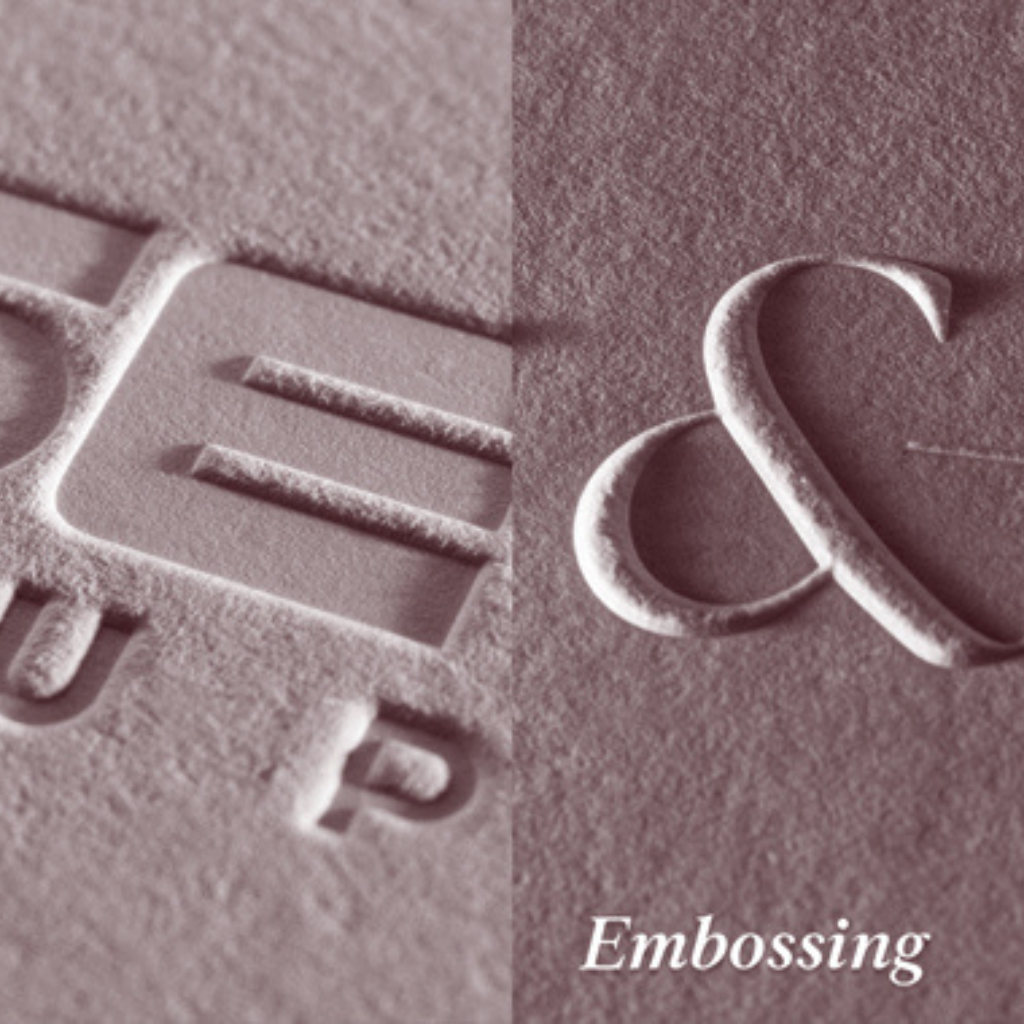In the world of design and branding, embossing and debossing are two techniques that elevate the visual and tactile qualities of a product. Though they may seem similar, the effects they create are distinct, providing different textures and impacts on the design. Both methods involve imprinting a design into a material, yet one creates a raised surface (embossing), while the other leaves an indented impression (debossing). These techniques are widely used in creating business cards, packaging, invitations, and other printed materials where first impressions are key.
Embossing and debossing are not just about aesthetics; they also play a crucial role in communicating a brand’s identity and enhancing its visibility. Whether used to convey luxury, professionalism, or uniqueness, the right choice of technique can significantly influence how a brand is perceived by its target audience.
In London, a hub for businesses and creative industries, embossing and debossing services are in high demand, with many companies seeking these techniques to give their designs a premium, tactile finish. With a variety of service providers offering customization options, businesses in London are able to choose the perfect embossing or debossing solution that aligns with their brand’s vision. These services are integral to a wide range of industries, including fashion, stationery, corporate branding, and more, making them a popular choice for those aiming to stand out in a competitive market.
What Is Embossing?
Embossing is a printing technique that creates a raised design or pattern on a material, typically paper or cardstock, by pressing it from beneath. This process results in a tactile, 3D effect that adds depth, elegance, and sophistication to a design. The raised areas are typically shiny or smooth to the touch, while the surrounding areas remain flat.
The process of embossing involves placing a design into a metal die that is then pressed into the surface of the material using a combination of heat and pressure. The material’s fibers are compressed or lifted to form a raised pattern, creating a contrast that enhances the visual appeal. Embossing can be done in various levels of depth, from subtle, delicate impressions to more pronounced, bold designs.
Common uses of embossing in design include:
- Business Cards: Embossed logos or text add a premium feel and make a memorable impression.
- Packaging: Elevating the design of product packaging helps brands stand out on store shelves.
- Stationery: Invitations, greeting cards, and letterheads often use embossing to add a luxurious touch.
- Branding Materials: Embossed company logos or taglines enhance a company’s identity.
What Is Debossing?
Debossing, in contrast, is a process where a design or pattern is imprinted into the material, creating an indented, sunken effect. Like embossing, debossing is achieved through a die and pressure, but in this case, the die is pressed into the surface of the material rather than beneath it. The design appears recessed or engraved into the surface, providing a more subtle and understated effect compared to embossing.
Debossing is commonly used for:
- Business Cards: The indented logo or design exudes a more refined, professional appearance.
- Packaging: For a sophisticated yet minimalistic look, debossing adds an elegant texture without overwhelming the design.
- Leather Goods: Debossing is often used in the fashion industry to imprint designs on leather accessories like wallets, belts, and bags.
- Stationery: Elegant stationery designs, especially for corporate uses, often incorporate debossed elements for added class.
Key Differences Between Embossing and Debossing
While embossing and debossing are similar in that both involve imprinting a design onto a surface, the effects they produce are visually and tactically different.
- Visual and Tactile Differences: Embossing creates a raised design that you can feel as well as see, offering a 3D effect. In contrast, debossing results in a recessed, sunken design that is tactilely smooth but visually subdued.
- Impact on Design Aesthetics: Embossing is often used to make a bold statement, drawing attention to the design through its raised texture. Debossing, however, adds a more subtle, sophisticated look, offering depth without being overly attention-grabbing.
- Durability and Texture Differences: Embossed designs often have a smoother surface and are more pronounced, which can make them more noticeable over time. Debossed designs, while equally durable, typically have a more delicate, minimalist texture.
Choosing Between Embossing and Debossing for Your Project
When deciding between embossing and debossing for your project, several factors must be considered:
- Design: The type of design can dictate which technique is most suitable. Complex designs with lots of detail often benefit from debossing to ensure clarity, while simpler logos or monograms may work better with embossing to emphasize the form.
- Texture: If you want a tactile experience for your audience, embossing offers a raised texture that can be more noticeable to touch. Debossing provides a smoother, more elegant effect.
- Purpose: For projects aiming to create a strong, eye-catching impression, embossing is ideal. However, if the goal is a more understated, elegant finish, debossing is often the better choice.
Embossing and Debossing Services in London
London offers a wide variety of embossing and debossing services for businesses and creatives. These services cater to various industries, from corporate branding to fashion, and provide professional-quality results with precision.
Several top companies in London specialize in embossing and debossing, offering both traditional and modern techniques. Some of the leading names include:
- London Print Studio: Known for their intricate embossing and debossing designs, they offer custom dies and a range of paper options.
- Embossing UK: Specializing in high-quality, large-scale projects, they provide embossing and debossing services for both individual clients and large enterprises.
- The Print Company: Offering a variety of paper textures and finishes, they provide a full suite of customization options for both embossing and debossing.
Customization options in London include different materials, such as textured paper, leather, and fabric, as well as the ability to choose from a variety of dies, finishes, and depths. Pricing can vary based on factors like the complexity of the design, the materials used, and the scale of the project.
Benefits of Using Embossing and Debossing for Branding
Embossing and debossing are not only about creating a visually stunning effect—they also play a significant role in enhancing a brand’s identity. Here’s how these techniques contribute to successful branding:
- How These Techniques Enhance Brand Identity: Embossing and debossing can make a logo, tagline, or product stand out, establishing a unique identity in a competitive marketplace. The texture adds a layer of sophistication that is hard to replicate with flat, printed designs.
- The Role of Texture in Consumer Perception: Consumers are more likely to engage with a product or brand that offers a multi-sensory experience. The tactile nature of embossing and debossing evokes a sense of quality and attention to detail, leaving a lasting impression.
- Examples of Successful Branding with Embossing and Debossing: Luxury brands like Tiffany & Co. and Chanel use embossing and debossing in their packaging to emphasize their premium status. Other brands, such as Apple and Rolex, incorporate debossing in their product designs to subtly reinforce their sophisticated image.
Read more: Turning a Passion into a Business: Ideas for Young Entrepreneurs
Conclusion
Embossing and debossing are powerful tools in the world of design, offering unique ways to enhance a brand’s visual and tactile identity. Whether you’re looking to make a bold statement with an embossed design or prefer the elegance of a debossed effect, both techniques provide a timeless, high-quality finish. In London, a thriving creative and business hub, these services are in high demand, enabling companies to elevate their branding and set themselves apart. With careful consideration of design, texture, and purpose, you can select the perfect technique to communicate your brand’s message effectively.















